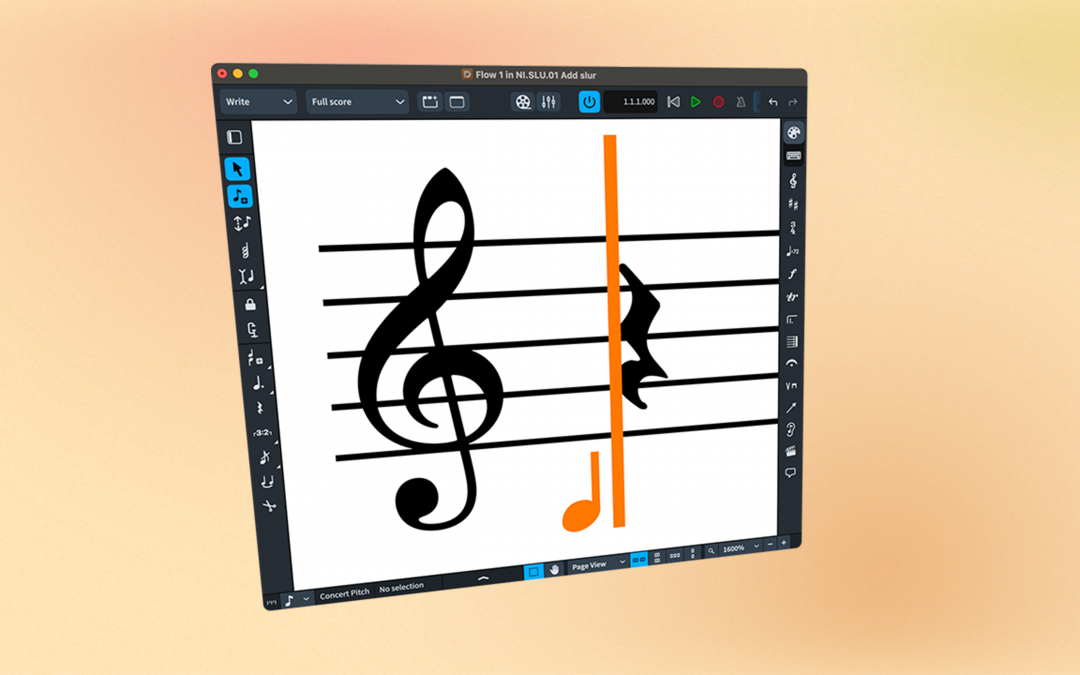I love Dorico, but then I have a rather special relationship with it. Not only am I in the extremely fortunate position to help present it to the world—by helping to shape the features and designing the user interface—I also have the great honour of showing it off to you all, guiding our users through all the incredible features by way of our tutorial videos. I challenge you to show me a better job.
Today I have great pleasure in announcing the first in a new series of YouTube playlists, all about learning Dorico. We’re starting with note input, and I have gone right back to first principles in order to write a series of videos that covers all you need to know to input notes in Dorico. It’s bang up-to-date with the latest Dorico release in terms of features and functionality, and I have reshot everything to use Dorico’s current look and feel.
The tutorial videos are concerned only with note input—other notations, such as dynamics, time signatures and so on, will receive their own dedicated playlist of videos at a later date. That means we’ll be looking at the left-zone in Write mode, and everything that the Notes toolbox and panel has to offer.
The playlist can be found here:
The videos are designed to help new users become acquainted with note input in Dorico, though I hope they will serve also as a valuable refresher for more experienced users, possibly with a few tips and tricks that even some of our more advanced users may not know about.
There are 22 videos in the series, so if there is something specific you are looking for, you can jump straight to it here:
01 Overview of Note Input
02 Starting Note Input
03 The Caret and Grid
04 Inputting Music Using the Mouse or Keyboard
05 Pitch and Duration
06 Inputting Chords
07 Inputting Slurs
08 Inputting Articulations
09 Inputting Rests
10 Inputting Tuplets
11 Inputting Grace Notes
12 Inputting Ties
13 Insert Mode
14 Selections and Navigating
15 Moving Notes: Pitch and Rhythmic Position
16 Copying Music to Speed Up Note Input
17 Lock Duration
18 Force Duration
19 Input into a Different Voice
20 Inputting Across Multiple Staves
21 Using the Cut Tool
22 Real-time MIDI Input
This is all part of our wider commitment to our support of Dorico, alongside the incredible work of my colleagues on the extremely detailed Dorico manual, and the longer-form YouTube live streams that dive in to Dorico’s features in greater depth using real-world contexts.
Over time, more videos will be released covering all aspects of Dorico’s functionality. I’m very much looking forward to building what I hope will be a valuable resource for both new and experienced users of Dorico.
What’s more, I have worked with my German colleague Markus Hartmann who will be bringing you German-language versions of these note input videos in the very near future – watch this space!


Thank you very much for doing this, I have just purchased Dorico, and I have been struggling with figuring out note input in a fast efficient way. I think these videos will be very helpful.
I like the style of all your videos. Step by step you dive into deeper knowledges how to use these tools. Your video tips are very informative and short enough.
That you.
Former user of Sibelius (v.4-7.5))))
Anthony, I’m a big fan of your teaching style. You have the knack of breaking down complex things so that they are easily understood.
I’m finally getting back to writing music after a too long hiatus. These videos are outstanding for that purpose.
Thank you for tackling this project.
Mine is in German and I would like it in english. How?
@David: You can switch Dorico into English via the General page of the Preferences dialog.
I just started using Dorico and these tutorial videos are so needed and so helpful! Thank you so much~
Excellent set of tutorial videos.
Thank you for making them available.
The right set of topics and presentations for a beginner to this product.